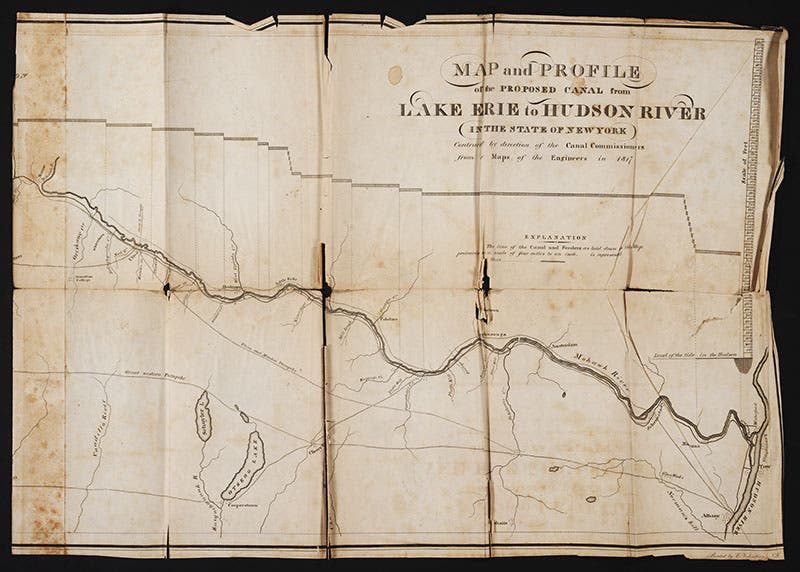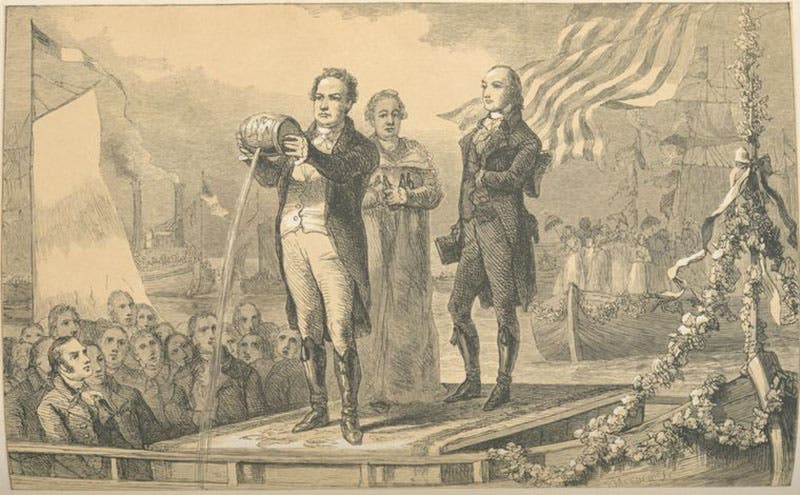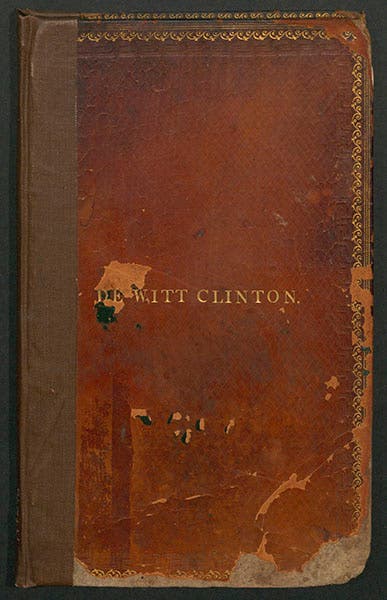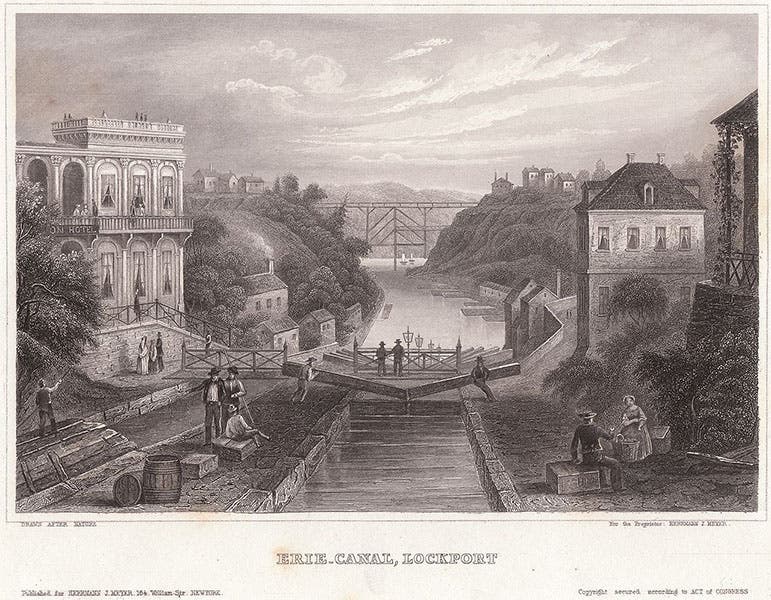Scientist of the Day - DeWitt Clinton
DeWitt Clinton, an American politician, was born Mar. 2, 1769. Clinton was mayor of New York City, U.S. senator, and governor of the state of New York. Clinton may be the first purely political figure that we have featured in this series who was not also a scientist. Clinton was born in the same year as Alexander von Humboldt, George Cuvier, and William Smith, all noted scientists, but that doesn't get him a berth here either. He earns scientific notice by being the driving force behind the building of the Erie Canal. He commissioned a report on the feasibility of such a project, which was published in 1817 as Official Report of the Canal Commissioners. The Report proposed a canal route and included an extended fold-out map of that route (see a segment of that map, second image). The Report also sets out proposed stages of construction.
Clinton implemented the recommendations immediately, and construction began that same year, 1817, supervised by Chief Engineer Benjamin Wright, about whom we have already written a post. It was a monumental project, digging the longest canal in the world at the time, extending for 360 miles from the Hudson River to Lake Erie, with numerous locks, since the canal climbed over 600 feet from east to west. We include a section elevation of the entire canal (third image). On Wikipedia, this image is zoomable, if you would like to take a closer line; here is the link. Lockport, with its famous 5-lock rise, is not too far from Erie. We include an etching of the canal at Lockport here (sixth image).
Clinton lost the governorship in 1822, but he won it back in 1825, just in time to see the canal completed. The first boat to pass through the entire canal departed from Lake Erie with Governor Clinton aboard, and he carried with him a small barrel of Lake Erie water. When the boat arrived in New York City, on Nov. 4, 1825, he poured the water into the bay at the mouth of the Hudson River in a ceremonial “mingling of the waters,” a rite that was commemorated by a woodcut (image below).
In our post on Wright, we showed some of these same images, including a section of the 1817 map, and the front cover of that report (fifth image). The cover is of more relevance here, because it is stamped “De Witt Clinton”; this was Governor Clinton's own copy, with his bookplate inside. After his death, this copy ended up in the Library of the Engineering Societies of New York, and thence to us, when we acquired the Engineering Societies Library in 1995.
Incidentally, you will note from the cover stamp that Clinton spelled his first name De Witt, and it was spelled that way until very recently, when someone, probably in the Library of Congress, decided that it should be spelled DeWitt. I don't know why we put up with these handed-down lexicographical revisions; I lost Conrad Gesner to Conrad Gessner some years ago, and I am not happy about it. In fact, I am going to rebel against the "DeWitt" Clintonists and change his name back to De Witt from this point onward.
One image we did not show earlier is the portrait of De Witt Clinton (first image). It seems especially appropriate now, because it was painted by Rembrandt Peale, whom we featured in a post just 8 days ago. The painting used to be in the collection of the Philadelphia History Museum, but in 2010, they de-accessioned the painting at auction. I won't get started on museums that sell off their holdings to raise funds. The buyer is unknown; fortunately, Wikipedia still makes an image available. The sixth and last image here, showing the canal at Lockport, is similar to the image we used to lead off our post on Wright. But the image there was a steel engraving by William Henry Bartlett, 1840, of which we have an original in our collections. The image here is an etching that claims to have been “drawn from nature”, but which was much more inspired by Bartlett’s earlier print. Dr. William B. Ashworth, Jr., Consultant for the History of Science, Linda Hall Library and Associate Professor emeritus, Department of History, University of Missouri-Kansas City. Comments or corrections are welcome; please direct to ashworthw@umkc.edu.








![“Aurora Borealis,” hand-colored wood engraving by Josiah Wood Whymper, [Natural Phenomena], plate 2, 1846 (Linda Hall Library)](https://assets-us-01.kc-usercontent.com:443/9dd25524-761a-000d-d79f-86a5086d4774/0245ffcb-b70c-477c-8792-0a73ebd54eb2/Whymper%2011.jpg?w=210&h=210&auto=format&fit=crop)


